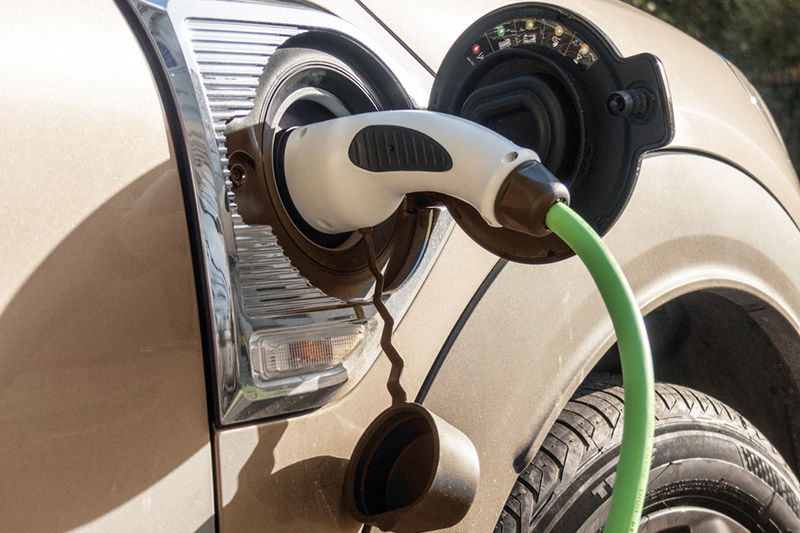
Electric cars are no longer the future.
Electric cars are no longer the future, they are the present. The UK Government has also announced it is fast tracking the ban on petrol and diesel cars and bringing the ban forward to 2035. Drivers could be allowed to legally take their hands off the wheel on motorways early next year and a autonomous system take over in the next phase of allowing self-driving cars onto Britain's roads, the Department for Transport revealed earlier in the month.
While exciting this new technology will provide new challenges for the recycling and motor vehicle dismantling industry. The rate of change in technology is stunning. I remember electric taxi’s being trialled in Manchester in the mid 70’s and nothing much changed until Tesla was founded in America 17 years ago. Since then the development of electric, semi-autonomous and fully autonomous vehicles technology has accelerated faster than an electric car. Yes the fastest road car in the world is electric, but cost £2.5 million so don’t expect one in your yard anytime soon.
This advanced technology for vehicles which have automated lane keeping is ready for roll out in new models from as early as 2021. It won’t be long before these vehicles make their way to the recycling yard long with the battery powered vehicles already being recycled in yards in the UK. Soon it will be a common sight for vehicles packed with lithium-ion batteries to be in yards everywhere.
Now is the time to start thinking about being prepared to recycle these vehicles and all the electronic gadgetry that accompanies them. They will certainly present challenges and the forefront of the challenges is recycling the lithium-ion batteries. Lithium-ion batteries are covered by the Battery Directive, which stipulates that at least 50% of the battery in its entirely must be recycled. Luckily around 90% of the vehicle battery can be recycled, at least that is the theory. Making a profit for doing so is another matter. The plastic casing and wiring which is the bulk of the battery pack is easily readily recycled. The problem is accessing and re-using the cells of the battery pack and the precious metals it contains.
Most petrol or diesel driven cars use the good old lead acid battery. Invented in 1859 it is technology we are all familiar with. The Lithium-ion batteries used in electric and hybrid vehicles is a different beast altogether. These batteries hold a lethal charge and are expensive to recycle safely.
Even removing them from the vehicle can be dangerous, they are large and heavy and removing them can cause the vehicle to move as the weight distribution alters. Battery weigh is being reduced but still a problem. I the earlier Tesla models, those that are now nearing the end of their life, the battery pack alone weighed 530 Kg, even on the Nissan Leaf battery pack weighed just under 300 Kg. As well as the weight there is also the possibility of fumes if the batteries are leaking fluid. The electrolyte within the battery pack (the bit that causes the chemical reaction to produce electricity), is flammable, highly toxic and explosive. Lithium reacts with water to produce heat and flammable hydrogen gas, which can ignite or combine explosively with atmospheric oxygen. These hazards must be dealt with in any recycling process before the battery cell components can be recycled.”
Electrocution is an ever present danger and as mention previously in Scrap Industry Professional batteries can start fires and with the increased use of magnesium and magnesium alloys in vehicles be incredibly difficult to extinguish.
Some vehicle manufacturers have developed second use for the vehicle batteries as home or industrial energy systems storing electricity generated by you solar panels. Nissan offer xStorage an off the shelf unit to hold your Nissan leaf power pack, Tesla have power wall
Batteries from electric vehicles provide a lot of energy in a small space, to achieve this compact size requires large quantities of cobalt in lithium-ion batteries. But energy storage units in buildings don’t need to be so small and lightweight, so it’s a common argument that the precious metals of lithium and cobalt are better recycled for more transport applications rather than being used as a storage solution for home energy. At some point however, either when the vehicle is being recycled or the storage capacity of the batteries in an electricity storage unit has dropped or been superseded by newer technology the battery pack will have to be recycled.
Special training and tools will be required to recycle Lithium-ion car batteries making it an expensive process. Robotic battery disassembly may be the answer, which would reduce the risk to humans and increased automation would reduce costs, making recycling economically viable. There are a number of projects researching robotic dismantling, but robots require a highly structured environment in which they can make their programmed repetitive movements on objects in a fixed position. Not easy to achieve in a scrap yard especially as there is no standardisation and each manufacturer has their own design and layout for vehicle power packs.
Recycling lithium-ion batteries is a challenge, and the dangers are real, but it is something the industry will need to address. Electric vehicles will soon be the norm and we all need to be ready.
Aug 2020

This page was designed with Mobirise
SHARE THIS PAGE!